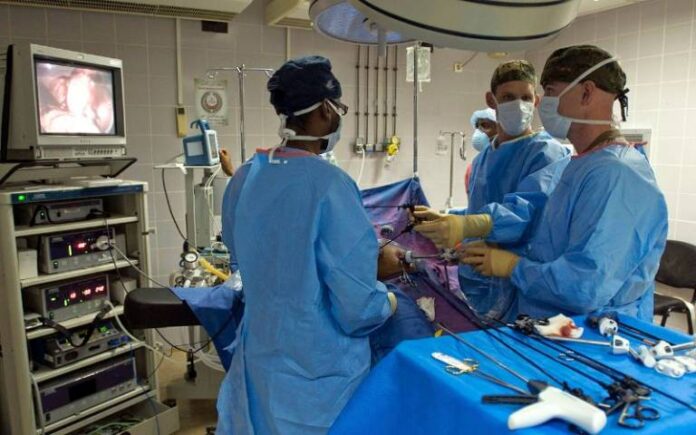A backlog of nearly half a million endoscopy procedures, essential for diagnosing gastrointestinal cancers and diseases*, has built up during the COVID-19 pandemic, finds a new analysis of NHS England data.
The study, published in the Lancet Gastroenterology and Hepatology, shows the number of endoscopies being performed in April 2020, the month following the first lockdown, fell by over 90%.
By January 2021 researchers estimated the backlog was 476,000, and this figure could potentially rise to more than 870,000, should there be a further full or partial lockdown and/or a slow return to normality.
Clinicians are now calling on the UK Government and NHS to implement a concerted mitigation plan, in order to prioritise patients in urgent need of an endoscopy and help reduce the health impact and consequences.
Explaining the study, lead author Dr Alex Ho (UCL Division of Surgery and Interventional Science) said: “The COVID-19 pandemic has had a significant impact on NHS diagnostic services. This has included endoscopic services which are crucial in the diagnosis of gastrointestinal cancers and diseases, such as bowel, stomach and oesophageal cancer. In this study, we sought to quantify the national backlog of endoscopic procedures in England and assess how interventions may affect this backlog.”
For the study, researchers analysed the number of endoscopies (colonoscopies, flexible sigmoidoscopies and gastroscopies) performed across England, using NHS England’s Monthly Diagnostic Waiting Times and Activity dataset.
In April 2020*, the month following lockdown, 10,476 endoscopy procedures were performed, representing 9·5% (or a 90.5% drop) of those done in April, 2019 when 110 584 procedures were done. Endoscopy procedures recovered to 105,716 in October, 2020 – 84.5% of the 125,072 done in October 2019.
As part of a modelling analysis, researchers concluded that even if endoscopy procedures reached 100% of pre-pandemic monthly totals from November 2020, the backlog in January 2021 would be 476,000.
Modelling against further interruption (i.e full or partial lockdown), researchers found a further two-month interruption would add an extra 15.4% or 73,000 to the backlog total, a four-month interruption would add an extra 43.8% or 208,000, and a six-month interruption (worst case scenario) would add an extra 82.5% to the potential backlog – equating to 393,000 additional procedures (so a potential backlog of 870,000). However, researchers say, the vaccine rollout and lessons learnt from the first wave mean the higher figure will likely be reduced.
Assuming no further interruption (recovery phase), researchers modelled the backlog from January 2021 to January 2023, using the average number of procedures carried out in ‘normal times’ researchers estimated the backlog recovery at 90% of capacity through to 130%. If 90% of procedures took place the backlog by January 2023 would be 811,000. At 100% the backlog would be 476,000. To clear the backlog by January 2023, procedures would need to be conducted at 130%.







